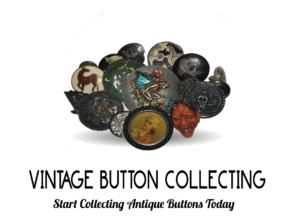
Antique Bakelite Buttons: The History of A Collectible’s Material
Any serious collector of antique bakelite buttons might be interested to know a little bit about their history. Bakelite jewelry, including what are today considered antique bakelite buttons, came out of the invention of plastic in 1909. Although celluloid, which is a manmade material derived from both synthetic and organic compounds, had existed as early as 1868, it was not until Dr. Leo Baekelund publicly announced the discovery of Bakelite that the production of consumer goods made from plastics really started ramping up.
Bakelite, the material used to produce what are now known as antique bakelite buttons, was considered the first real plastic product because it was comprised strictly of synthetic materials. It was popular for jewelry and décor items because it could be dyed with pigments before molding rather than having to be painted after molding. It was cheap, durable and very popular.
Bakelite fashion accessories, including what we now recognize as antique bakelite buttons and antique bakelite jewelry, were most popular during the 1920s through to the 1940s. Because bakelite jewelry was relatively inexpensive, it became especially popular with women during the era of the Great Depression. Bakelite jewelry, bakelite apparel accents (including today’s antique bakelite buttons) was used by these women to jazz up their existing wardrobes, since they could rarely afford to buy newer, more modern clothing during such lean times.
The antique bakelite buttons that collectors so love to find today, as well as scads of other jewelry, accessories and household items were able to undergo mass production during the 30s and 40s, and it was not uncommon to find the typical kitchen and bedroom loaded with Bakelite products. Everything from kitchen flatware to appliance and electronic casings to bath and beauty accessories to apparel (including, of course, the antique bakelite buttons hoarded by collectors today) could be found in the average American household during this period.
During wartime, bakelite was also used to outfit the American military. Aviator goggles, defense phones and a number of other products were made with bakelite. However, the immense production needs during wartime eventually led to the development of even cheaper and more versatile synthetic materials like vinyl and acrylic.
Although extremely cheap to produce and consume at the time it first hit the market, the popularity of Bakelite goods as collector’s items today is due to the fact that Bakelite was made obsolete by the newer and more efficient plastics technologies refined in the 1950s. Antique bakelite buttons, bakelite jewelry and bakelite décor items now command far higher value on the open market as collectibles than they ever did during the peak of their popularity. Collectors of antique bakelite buttons and bakelite jewelry can ask for as much as $1500 per piece, depending on its rarity and condition.












